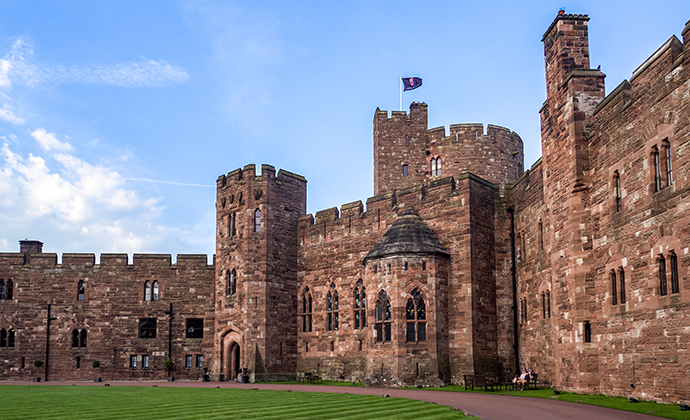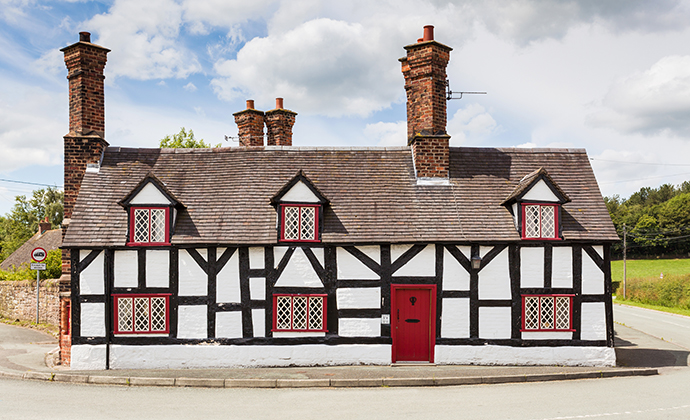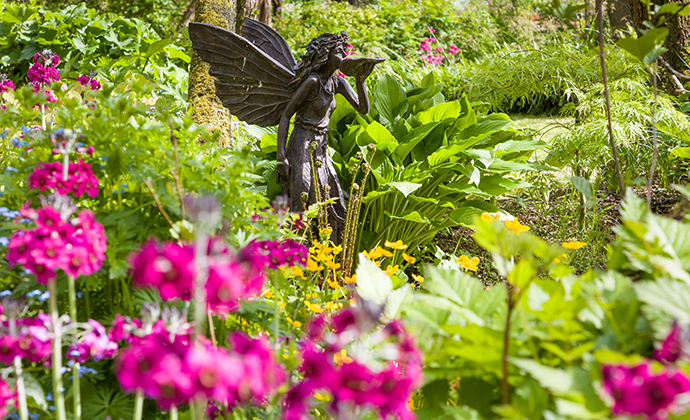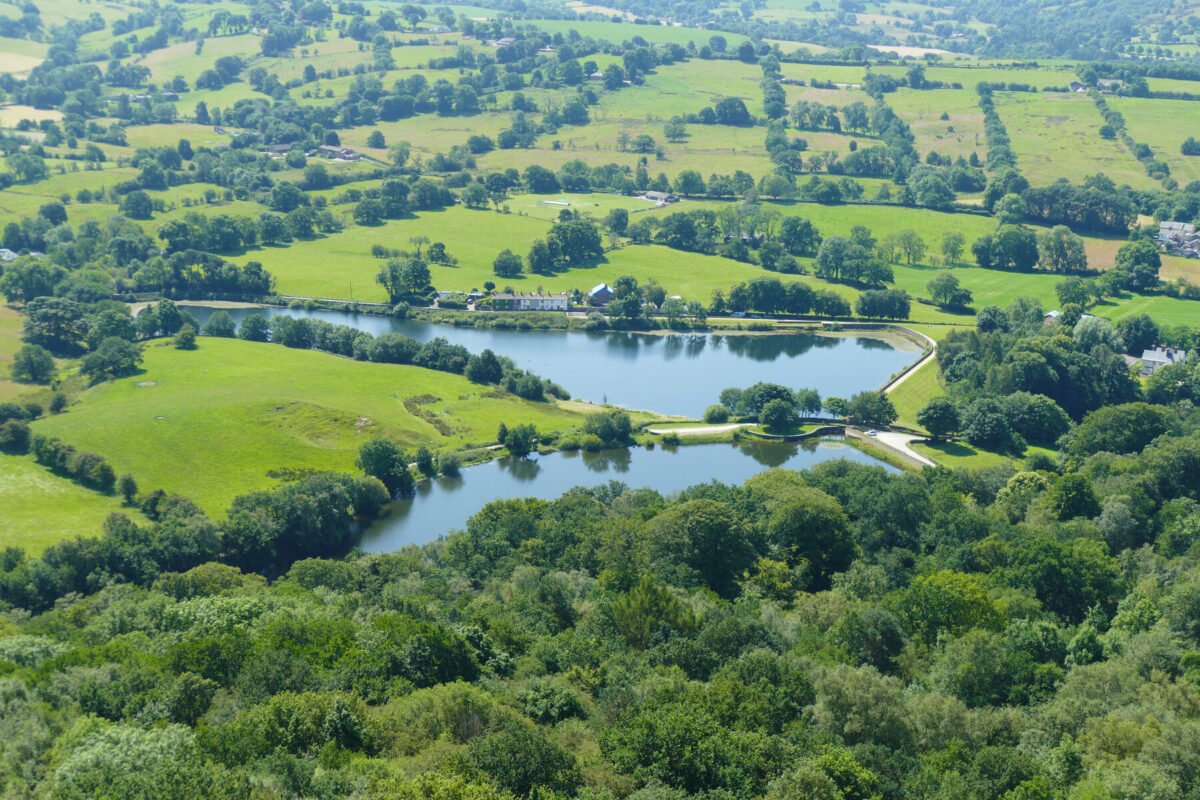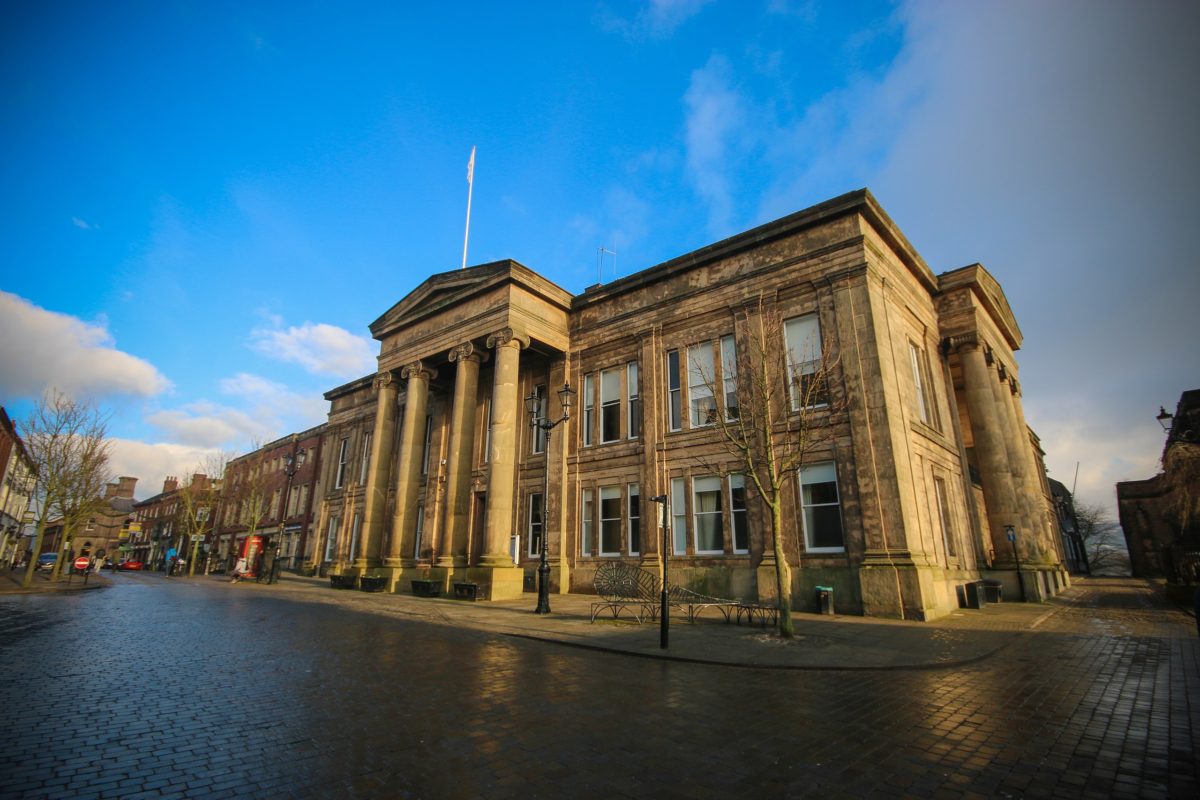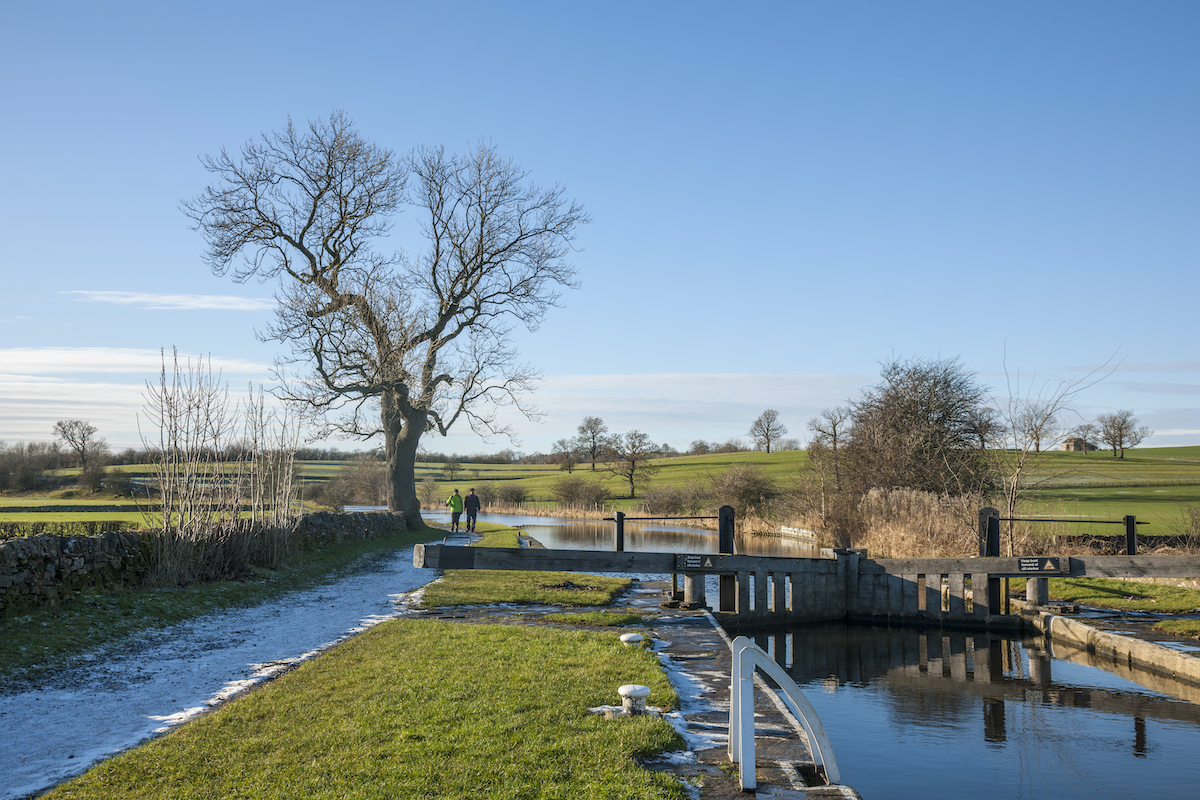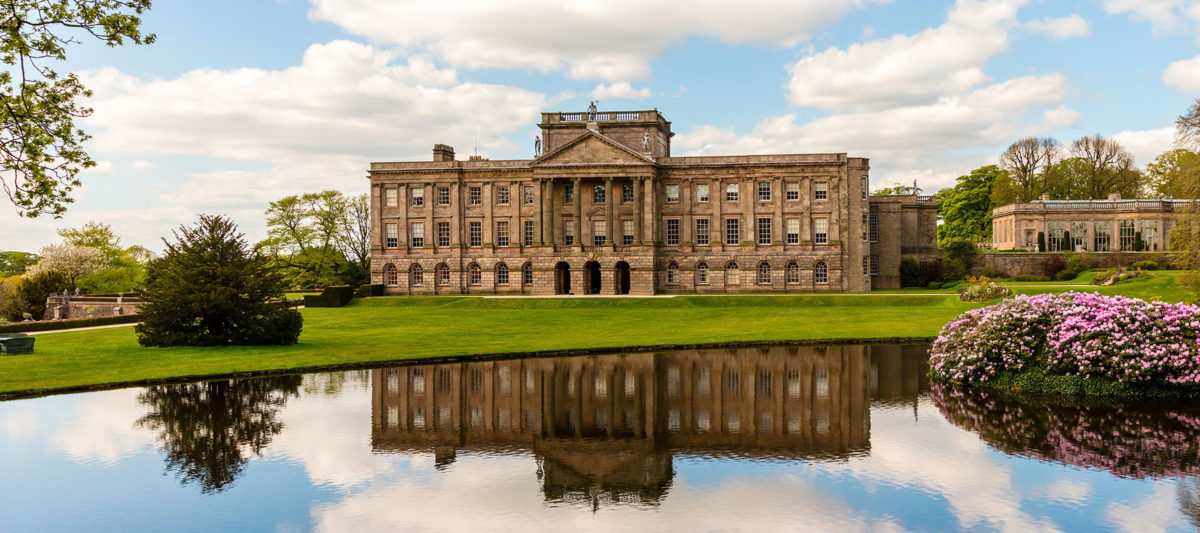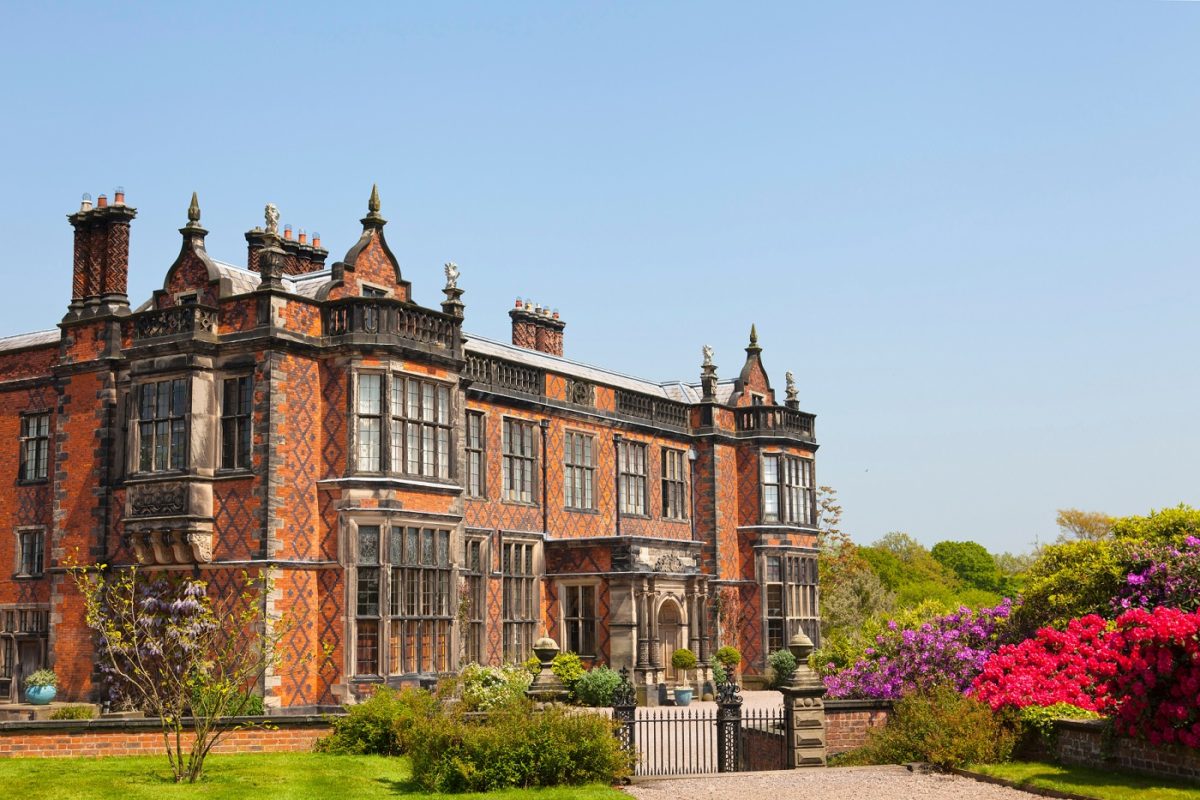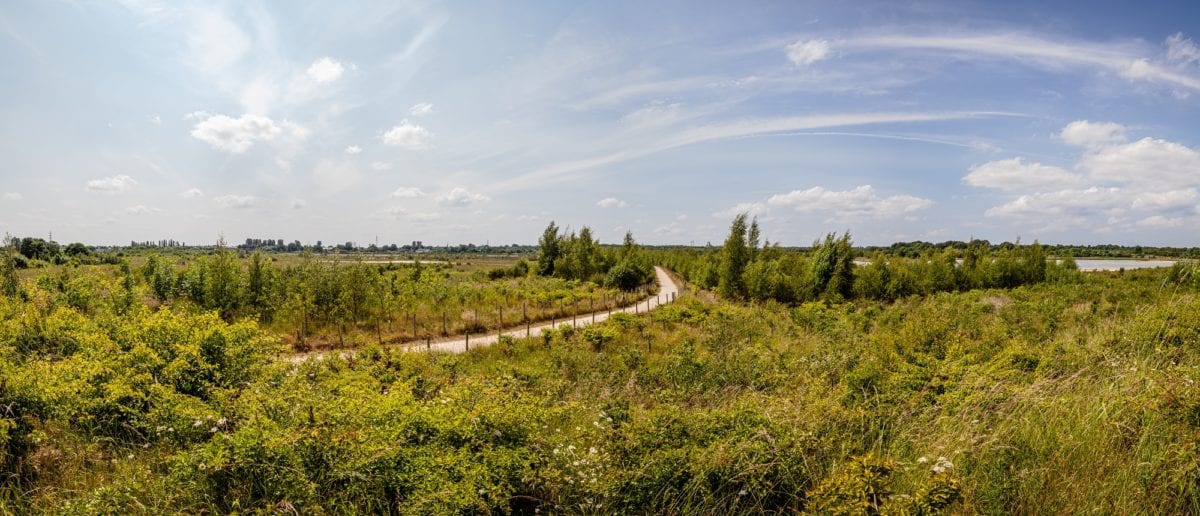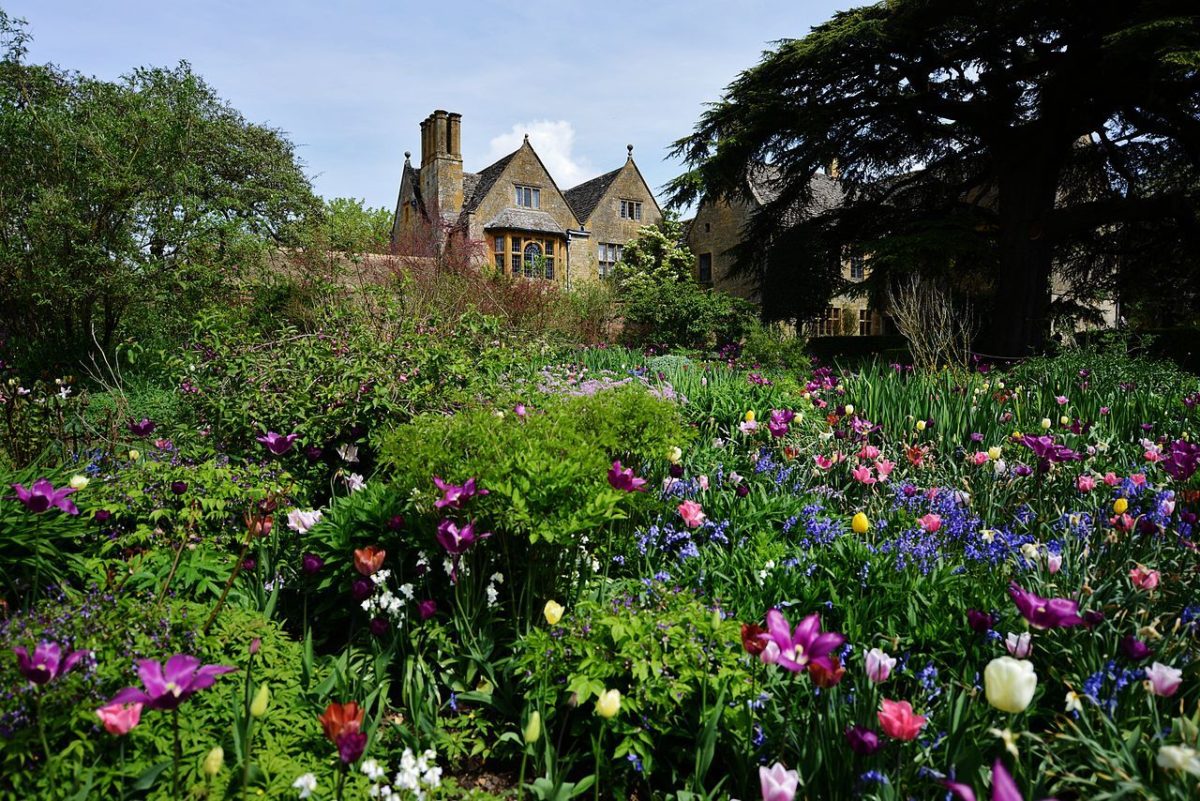Visit unique museums housing quirky collections and experience equally eccentric customs, from the World Worm-Charming Championships at Willaston to fig-pie rolling at Wybunbury.
Kate Simon and Suzanne King, authors of Cheshire: the Bradt Guide
Whether you’re here for a day, a weekend break or an entire holiday, Cheshire will confound your expectations. Most who come here expect a landscape that is flat, rural and landlocked, and are therefore surprised by the great diversity of terrains that range from the beaches of the Wirral peninsula to the rolling moors and craggy outcrops of the Cheshire Peak District. Industry, too, has left its mark, and the county is rich in fascinating heritage sites including silk mills, salt mines and canal museums, as well as being home to one of the world’s most important astronomical observatories and a hidden nuclear bunker.
The county town of Chester is an undoubted highlight, with its unique shopping arcades and impressive Roman history, while the market towns of Macclesfield, Nantwich and Knutsford should not be overlooked. Elsewhere, there are grand manor houses, wonderful gardens, nature reserves brimming with wildlife-watching opportunities and more festivals than you can shake a maypole at.
Those who come expecting ‘bling’ will certainly find it in the more affluent villages of Real Housewives fame, but look beyond the surface and you’ll discover the county has much to offer the Slow traveller, from farm shops and falconries to marshes and moorlands.
Bradt on Britain – our Slow Travel approach
Bradt’s coverage of Britain’s regions makes ‘Slow Travel’ its focus. To us, Slow Travel means ditching the tourist ticklists – deciding not to try to see ‘too much’ – and instead taking time to get properly under the skin of a special region. You don’t have to travel at a snail’s pace: you just have to allow yourself to savour the moment, appreciate the local differences that create a sense of place, and celebrate its food, people and traditions.
For more information, check out our guide to Cheshire
What to see and do in Cheshire
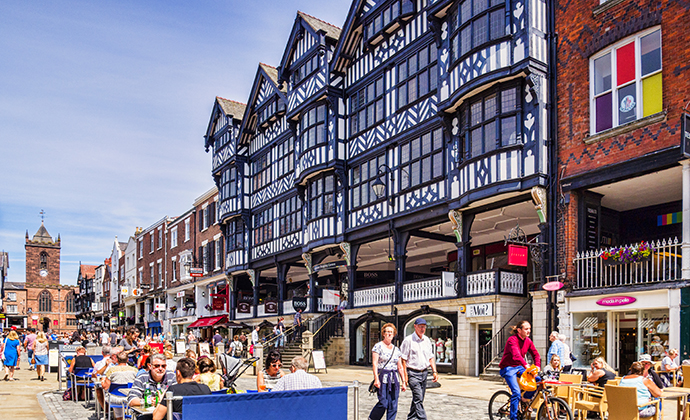
Chester & Wirral
Chester may be small compared with many other British cities, but it has had a big impact locally and nationally down the centuries. The largest of the Roman forts in Britain, on the frontline of Wales, Chester, say some historians, was meant to become the capital of Britannia. The Danes, Saxons and Normans capitalised on this strategic position, which was also bitterly fought over during the English Civil War.
As peace descended on Chester, the Georgians and Victorians embellished its streets, imposing an air of elegance, with 20th- and 21st-century architects and town planners applying their own brush strokes (and provoking varied reactions). Chester was an important trading hub in the Middle Ages, a port of more importance than Liverpool, providing an entry point for goods including linen from Ireland.
But by the 18th century, the city had been eclipsed by its northern neighbour due to the silting of the Dee. The ‘Cestrians’ (as the locals are called) were known for their leatherwork – boots, shoes, saddles and gloves – and for silver, of which there is a fine collection in the Grosvenor Museum. The Industrial Revolution left its mark with the railway station (of which there were once two) and the Chester Canal, part of the Shropshire Union Canal (over which the 18th-century Steam Mill still looms), with its spur that once delivered narrowboats onto the waters of the River Dee for a smooth and efficient transfer of freight.
Yet Chester isn’t stuck in the past. The presence of the university and the city’s appeal to young families, with its gentle mix of the urban and rural, maintains a youthful atmosphere, where new trends quickly reach its shops, bars and restaurants. There’s a thriving cultural scene: the city has its own orchestra, the Chester Philharmonic, an open-air theatre, and a new arts centre, Storyhouse, with a theatre, cinema and library. An impressive amount of world-class exhibitions call by here and the lack of a major art gallery has fostered a creative approach where buildings such as the cathedral are put to work as innovative art spaces.
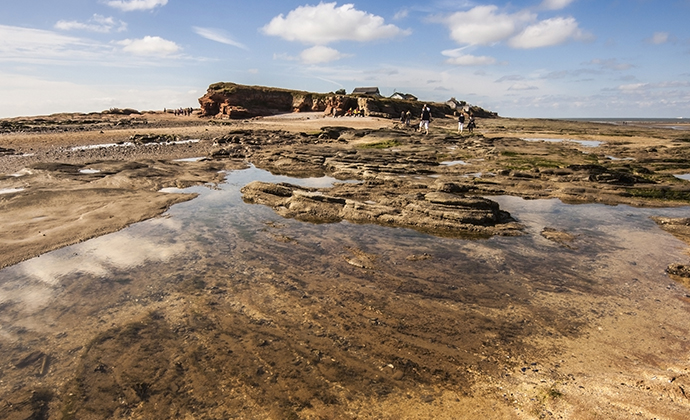
To the northwest of the city lies the Wirral peninsula, adding a perhaps unexpected coastal aspect to the county. In this first edition, we are taking a selective approach to our coverage of this area, winding the clock back to the days of the Vikings, whose influence echoes down the years, the medieval monks who rowed the first ferry across the Mersey, the industrialists who built model workers’ towns at Port Sunlight and Bromborough Pool, and the canal engineers who connected the industrialists of Shropshire to a global market.
The peninsula is also home to the world’s first public park and Britain’s first country park, an exotic garden, an RSPB reserve teeming with wildfowl, the historic shorefront communities of the River Dee, and the most unexpected of Cheshire’s pleasures: its very own islands.
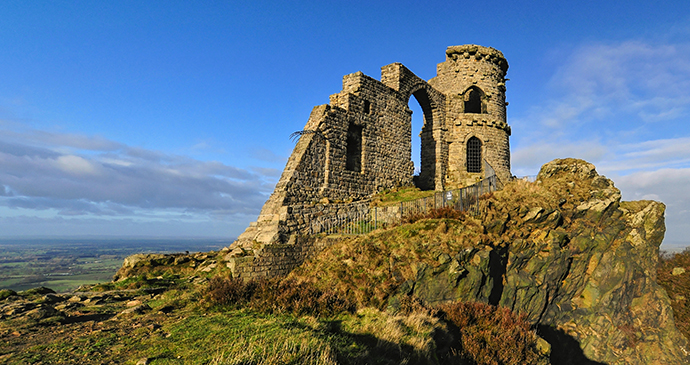
Crewe & the Staffordshire Borders
Cheshire’s eastern edge is an industrious place, focusing on four busy towns: Crewe, Alsager, Sandbach and Congleton. Each was once a country backwater but all have transformed into populous centres, thanks to the roles they played in the agricultural and industrial revolutions and, most importantly, the arrival of the railway, which shaped the towns we see today. These are not conventional tourist destinations, but rather are the working towns they appear to be, though that has been used as a reason to overlook them for too long.
If you take the approach of uncovering their history you’ll reap rewards, because a closer look reveals medieval alleys and cobbled market squares, black-and-white half-timbered houses and grand Georgian and Victorian mansions, lofty churches and proud municipal buildings, with the hand of Sir George Gilbert Scott witnessed at many turns. The place is bursting with tales about the noble families and wealthy benefactors that ruled over these lands and the local communities that served them, with walk-on parts for Romans, Saxons, Shakespeare’s players, Civil War soldiers, radical preachers and even Buffalo Bill.
Amid these towns are well-planned parks, flower-filled pathways where tracks once lay for salt and sand to be hauled across and flooded quarries turned to use as places to walk and get out on the water. At their edges the plain gently rolls out, rising to the dramatic moors on which dance the shadows of the Peaks, begging you to pull on your walking boots and tramp across hill and vale.
One distinct theme unites this area – the proximity to Staffordshire, on which many locals naturally orientate rather than look inward to their own county, perhaps because Staffordshire’s mines and pot banks have provided work for people here for so long. It touches everything: arguably the accent, certainly a predilection for oatcakes and definitely some of the words you will hear. Don’t be surprised to be called ‘duck’ or ‘shug’ in these parts; these are local terms of endearment.
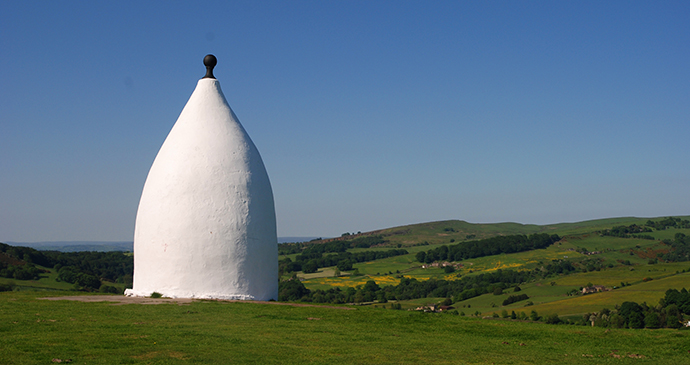
Macclesfield & the Peak District
This corner of Cheshire, bumping up against the Pennines, gets gradually wilder the further inland you head. To the west of the Macclesfield Canal it’s still gently rolling and pastoral, while to the east things get more extreme.
Here, lush green fields and grazing cattle give way to dark wild moors and wind-whipped sheep; pretty villages of half-timbered cottages are replaced with isolated farmsteads of millstone grit; and instead of hedgerows, there are dry stone walls running across the hilltops.
Much of this wilder countryside is part of the Peak District National Park – a fact that may surprise the many who assume the park is contained within the Derbyshire borders. Cheshire’s chunk may not be as well-known as the rest but it deserves recognition, including, as it does, one of the county’s grandest stately homes (Lyme) in the north and one of its prettiest rivers (the Dane) in the south.
In between, there are glorious views from the roads and footpaths that wind across the moors – including the dramatic A537 Cat and Fiddle road between Macclesfield and Buxton – so whether you’re travelling by car, bike or on foot, take it slowly and factor in plenty of time to just stop, stare and soak up the peace of this sparsely populated region.
The commercial hub of the area is Macclesfield, where a handful of interesting museums tell tales of the silk trade that made the town’s fortunes and left it with a stock of attractive Georgian buildings. In the valleys round about, former small mill or mining towns and villages are now considered desirable places to live, with spruced-up workers’ cottages and glorious walking countryside on their doorsteps. Start exploring and you’ll find some lovely stately homes and little-known ancient monuments, unusual churches and specialist museums, along with delicious ice cream, great micro-breweries, a large heronry and Cheshire’s highest hills.
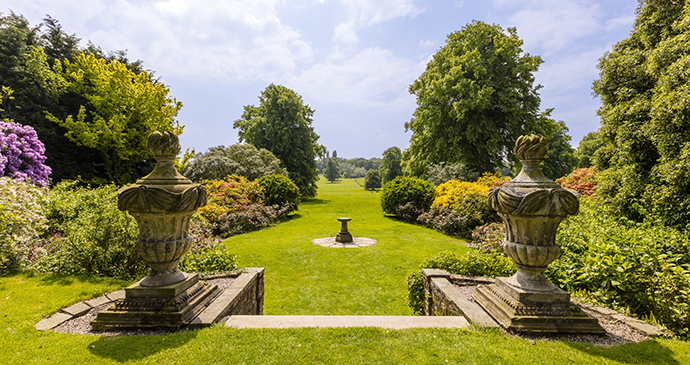
Mersey & Northwest Cheshire
Much of the northwest corner of the county belies the typically rural image of Cheshire, dominated as it is by the large towns of Warrington, Widnes and Runcorn that flank the Mersey and Manchester Ship Canal. When the Industrial Revolution came along, this area transformed rapidly: meadows were covered in mines and mills; farms gave way to factories; quarries and chimneys supplanted cattle and cheese. Today, of course, it has many of the problems typical of areas that have been industrial then gone into decline as the industry disappears.
It would be a mistake, though, to write it off as unworthy of a visit. The boom years have left the towns with some interesting buildings and tales to tell – rich pickings for lovers of industrial archaeology and social history – and the canals that once carried industrial freight are now the peaceful preserve of narrowboaters and towpath-strollers. For every chemical works or power station that blights the landscape, there’s a quarry turned nature reserve or postcard-pretty village.
There’s a ruined Norman castle and the remains of a 12th-century priory, some beautiful walled gardens and excellent farm shops. Everywhere, you find tantalising traces of the days when there were big estates in this area – here an old family chapel, there a lodge house that once guarded the sweeping drive to a grand country manor.
There are encounters with famous local characters, both fictional (including the Cheshire Cat and Alice – author Lewis Carroll was born here) and factual (including the vicar who earned 18th-century infamy by chopping down Shakespeare’s mulberry tree). And there’s plenty here to keep birdwatchers happy, with a variety of habitats (from the mudflats of the Mersey Estuary to the mossland and woodland of Risley Moss) encouraging a huge range of resident and migrant species.
In some of the areas of this region, such as the stretch from Lymm to Great Budworth and the area round Frodsham and Helsby, the appeal is easy to see and the attractions more obvious. In other areas you may have to dig a little deeper to find your rewards. But discovering the hidden beauties of a part of Cheshire I didn’t know very well before was one of the joys of researching and writing this book – and a salutary lesson in not judging a place before you’ve been.
Northeast Cheshire
If northwest Cheshire is often dismissed by the unknowing as being all downtrodden industrial wasteland, the northeast is often sneered at for being all ostentatious wealth and bling. There’s some truth in it, of course. The area does have a greater than average concentration of high-living high-earners. But then if you’ve made your millions, why wouldn’t you choose to live here? It’s an appealing, attractive part of the county.
The arrival of the railways in the mid 19th century transformed much of this region. It was largely rural until then, and indeed much of it still is today. The Royal Cheshire County Show (a celebration of all things agricultural) is held here and the lush farmland is dotted with blink-and-you’ll-miss-them villages and prosperous market towns. But the new trains made it easy for those who’d made their fortunes in the dark, satanic mills of Manchester to live far from the smog and grime produced by the sources of their wealth.
While the workers were crammed into tiny tenements in the inner city, the bosses moved out to build splendid, spacious villas in locations where the air was fresh and clean and the countryside rolled just enough to be prettily scenic without becoming too challengingly rugged. Some of those houses remain today, in the desirable avenues of places such as Bowdon, Hale and Alderley Edge.
The same railways made the same beauty spots popular destinations for workers to visit on their rare days off. In Libbie Marsh’s Three Eras, Elizabeth Gaskell describes a Whitsuntide trip to Dunham Massey, recording the fact that at the time it was seen as a little old-fashioned next to the trendier delights of Alderley.
The region is still popular with day trippers today, with some great country pubs, attractive rural walks, and a cluster of National Trust sites, including Tatton Park and Quarry Bank. It’s home to the internationally significant Jodrell Bank Observatory, and it has unearthed the UK’s oldest bog body (Lindow Man) and produced famous adventurers such as George Mallory. It’s also more than happy to embrace the eccentric, whether it’s a museum devoted to cuckoo clocks or an opera house on a farm.
Peckforton Castle is well positioned atop a high ridge © Philip Bird LRPS CPAGB, Shutterstock
South Cheshire
South Cheshire runs from the outskirts of Chester to Nantwich, via the borders of Wales and Shropshire and the southern folds of the Sandstone Ridge. It is a swathe of the county that bears few of the scars of industry, despite salt-making and tanning taking place here and there. Instead, its fertile pastures have long been favoured by dairy and wheat farming. Through the fields and meadows of South Cheshire course rivers that once propelled the waterwheels of long-gone mills and canals that carried goods to and from Shropshire and north Wales, their banks and towpaths now providing pleasant places for peaceful walks.
Beeston is a quaint village with a population of just 200 or so © Joe Wainwright Photography
In this area, you’ll begin to sense the power of the Norman Earls of Chester, who presided over the county, as well as the influence of the great Cheshire families who established themselves after the dissolution of the monasteries or from the spoils of the English Civil War. Malbank, Tollemache, Grosvenor, Cholmondeley, Wilbraham and Cotton are among the names you will constantly come across in these parts. They left their mark in the shape of castles, country houses and churches, which subsequent generations have constantly tinkered with, creating irresistible puzzles for history-lovers. Though quiet today, the border with Wales reveals remnants of age-old defences, such as at Malpas, a reminder that this was once a heavily patrolled frontline, while the turmoil of the English Civil War is evidenced in places, from an annual re-enactment of a battle at Nantwich to the ruination of the castle on Beeston Crag. The latter is one of two showstopping castles on the Sandstone Ridge, which rises abruptly from the plain to offer some of the county’s best walking, through woods and heaths, emerging on outcrops from which not only Cheshire but surrounding counties can be surveyed. Down in the valley, the villages and market towns provide more historic eye candy, yet there is plenty of contemporary interest here, too, with busy calendars of events and attractions to satisfy young and old, plus recommendable places to eat and drink.
Stockport & the Cheshire Panhandle
Some might feel that ‘Stockport and the Cheshire Panhandle’ has no place in a 21st-century guide to Cheshire, the whole of the area within it having been parcelled up and hived off to neighbouring counties more than four decades ago now. But the Cheshire roots here stretch back centuries rather than mere decades, so we quickly dismissed the idea of leaving it out. To anyone who remembers Cheshire pre-1974, the shape of the new county looks all wrong without the ‘panhandle’, the distinctive little spur that used to reach up between Derbyshire, Lancashire and Yorkshire.
You can see the logic to the border reorganisation. The wild moorland region of the far northeast somehow feels better suited to its new addresses of Derbyshire and Yorkshire, and there’s an obvious affinity between the old Cheshire mill towns on one side of the Tame and their once-Lancashire equivalents on the other, which came together to form the newly created Tameside. Yet even now many residents of the region retain Cheshire as their postal address and, especially in the south and west, still feel that Cheshire is where their allegiances lie.
But enough of arbitrary administrative borders. The important thing is that there’s plenty for a Slow traveller to enjoy here. The impressive industrial heritage of towns such as Stockport might be expected, along with their big old mills and factories, towering over terraces of tiny workers’ cottages. Few realise, however, that exploring this varied area also leads you to some beautiful churches and glorious country views; to one of England’s finest black-and-white mansions and one of its steepest flights of canal locks. As you journey around, you’ll also come across unlikely connections to such famous cultural figures as L S Lowry, Agatha Christie and Christopher Isherwood.
The Anderton Boat Lift is a truly impressive feat of Victorian engineering © Marketing Cheshire
The Heart of the Plain
The Cheshire Plain has two tales to tell. To the east, it is the story of Britain’s salt industry, from its rise during Roman times to its continuing importance for the chemical plants that toil here. Tour this area and you will soon appreciate the effect that the precious mineral has had, good and ill, on the landscape and its people, and how it set the foundations for today’s thriving communities, which the rash of modern housing estates and fast roads suggest continue to expand. Northwich and Middlewich were known as Condate and Salinae to the Romans, who built roads and forts and exploited the lakes of brine beneath the soil, an industry that consolidated in this area once rock salt was discovered in the 17th century. Discover salt’s role in powering the pioneering transport network on a narrowboat trip along the Trent and Mersey Canal, or on its towpaths, following in the hoof prints of the horses that drew the heavily laden barges. Where the canal meets the Weaver Navigation, get a close-up look at a feat of high Victorian engineering that connected the two waterways with a ride on the Anderton Boat Lift. At the museums at Weaver Hall and Lion Salt Works unpick the details of how salt shaped society and sharply defined the fortunes of the locals, rich and poor. Then follow the newly laid paths around the once weak and poisoned wastelands that are successfully being returned to nature at the Northwich Woodlands and Winsford Flashes.
This part of the county is home to some of the region’s loveliest gardens, like here at Stoneyford Cottage © Joe Wainwright Photography
To the west, the heart of the plain is the story of nature, dominated by the Sandstone Ridge, which ripples through the land on its passage northwest, and Delamere Forest, a great gulp of green pockmarked by meres and mosses created at the dawn of time. Delve into this remnant of the ancient Mara and Mondrem forests to discover where Iron Age man built hill forts, feudal lords hunted for game, and today’s conservationists wrestle with maintaining healthy yet relevant ancient woodland so that it can flourish while also providing a place to enjoy being outdoors. Climb on foot or use pedal power to reach its highest point for a show-stopping panorama of the surrounding counties and dip beneath its leafy canopy to discover a quaking bog or go in search of the Gruffalo. At the forest’s edges, step through the gates of some of Cheshire’s loveliest gardens, such as those at Abbeywood and Stoneyford Cottage, and discover the hidden history of Little Switzerland and its fruit farms.
The Southwest Peak, Cheshire & Staffordshire Fringes
Surrounding the long finger of the national park in the southwest is a string of mill towns, including New Mills, Macclesfield and Leek. These are a testament to Victorian enterprise and ingenuity: New Mills with its sweeping viaducts and great arched bridges; Macclesfield with its redbrick silk mills (now part of a fine museum trail); and Leek with its Arts and Crafts architecture (built on the wealth of its own mill industry). Between Macclesfield, Leek, Longnor and Buxton, there are some of the loveliest yet largely unexplored parts of the national park, an area with its own distinctive character: it is a mix of millstone grit and coal measures with sweeping ridges of open moorland falling away to pasture, carved out by wooded cloughs and fast-flowing streams.
Within are isolated hamlets and villages, with unexpected treats to be found in the quietest corners. There’s no better place to go slow, whether its fishing on the River Dane, sampling beers in a local brewery, weaselling and rock hopping on the Roaches or conquering one of the mini-peaks such as Shutlingsloe or Parkhouse Hill. It’s a part of the Peak District that draws me back again and again.
Related books
For more information, see our guide to Cheshire:
Related articles
On her camping road trip through Cheshire, Caroline Mills discovers a county as surprising as it is beautiful.
With Georgian terraces, surviving mills and far-reaching views out to the hills, there’s plenty for visitors to see and do in Macclesfield.
Take it slow and savour these pockets of tranquility.
Cheshire’s segment of the Peak District may be small, but it is filled with rolling hills and picturesque villages.
The county is blessed when it comes to impressive manor houses.
We take a tour of the county’s lesser-known trails, nature reserves and forests.
These are some of our favourite green spaces to wander in England.
